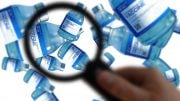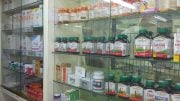Recently, pulse oximeters and oxygen concentrators became more popular, thanks to the coronavirus infection, that’s why Food and Drug Administration of the U.S. (FDA) drew attention to the at-home oxygen therapy, and what do we need to know, when use it.
“To survive, we need oxygen going from our lungs to the cells in our body. Sometimes the amount of oxygen in our blood can fall below normal levels. Asthma, lung cancer, chronic obstructive pulmonary disease (COPD), the flu, and COVID-19 are some of the health issues that may cause oxygen levels to drop. When the levels are too low, we may need to take extra oxygen, known as oxygen therapy,” – The FDA writes.
Should be noted, that all methods, that are described down below should not be used at home unless it has been prescribed by a health care provider. “Giving yourself oxygen without talking to a doctor first may do more harm than good. You may end up taking too much or too little oxygen. Deciding to use an oxygen concentrator without a prescription can lead to serious health problems such as oxygen toxicity caused by receiving too much oxygen. It can also lead to a delay in receiving treatment for serious conditions like COVID-19,” – the FDA warns.
Oxygen Concentrator
Oxygen concentrator is one, of the most popular ways to get extra oxygen into the body. Oxygen concentrators are medical devices required to be sold and used only with a prescription. When it works, the device take in air from the room and filter out nitrogen. The process provides the higher amounts of oxygen needed for oxygen therapy.
“Concentrators may be large and stationary or small and portable. Concentrators are different than tanks or other containers supplying oxygen because they use electrical pumps to concentrate the continuous supply of oxygen that comes from the surrounding air,” – said in the article.
When using an oxygen concentrator:
- Do not use the concentrator, or any oxygen product, near an open flame or while smoking
- Place the concentrator in an open space to reduce chances of device failure from overheating
- Do not block any vents on the concentrator since it may impact device performance
- Periodically check your device for any alarms to make sure you are getting enough oxygen.
Pulse Oximeters
A pulse oximeter is a medical device that indirectly monitors the oxygen saturation of a patient’s blood (as opposed to measuring oxygen saturation directly through a blood sample) and changes in blood volume in the skin, producing a photoplethysmogram that may be further processed into other measurements.
As with any device, there is always a risk of an inaccurate reading. If you are using a pulse oximeter to monitor your oxygen levels and are concerned about the reading, contact a health care provider. And do not rely only on a pulse oximeter. It is important to keep track of your symptoms, or how you feel. Contact a doctor if your symptoms are serious or get worse.
When using a pulse oximeter:
- Sit still and do not move the part of your body where the pulse oximeter is
- Do not use the device on your hands when your hands are cold
- Remove all fingernail polish if using the device on your hands.
- If you experienced a problem or injury that you think may be related to pulse oximeters or oxygen concentrator, you can voluntarily report it through the FDA’s MedWatch program.
The FDA reminds: “If you are prescribed an oxygen concentrator for chronic health problems and have changes in your breathing or oxygen levels, or have symptoms of COVID-19, call your health care provider. Do not make changes to the oxygen levels on your own.”





Be the first to comment on "Pulse Oximeters and Oxygen Concentrators"